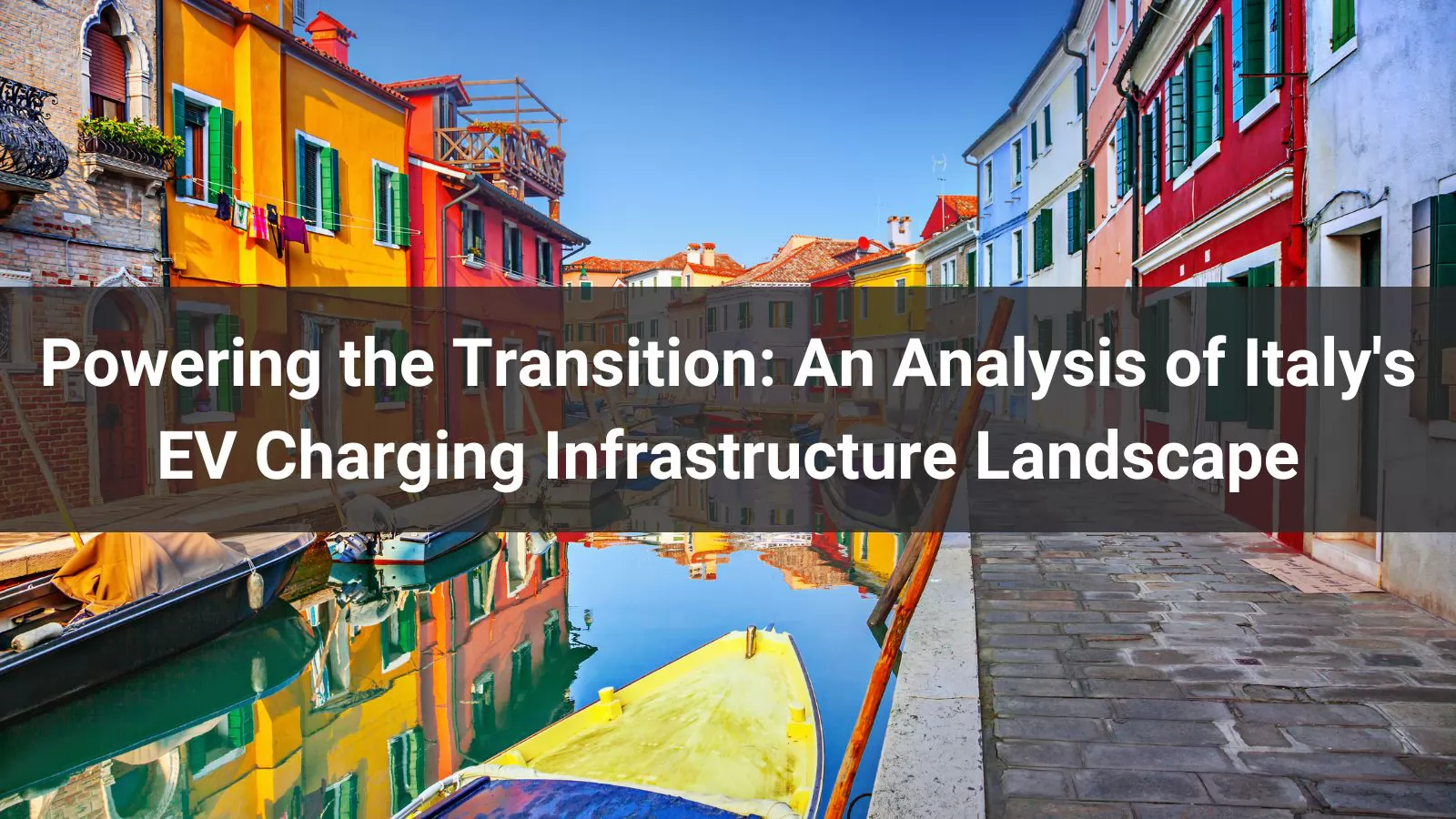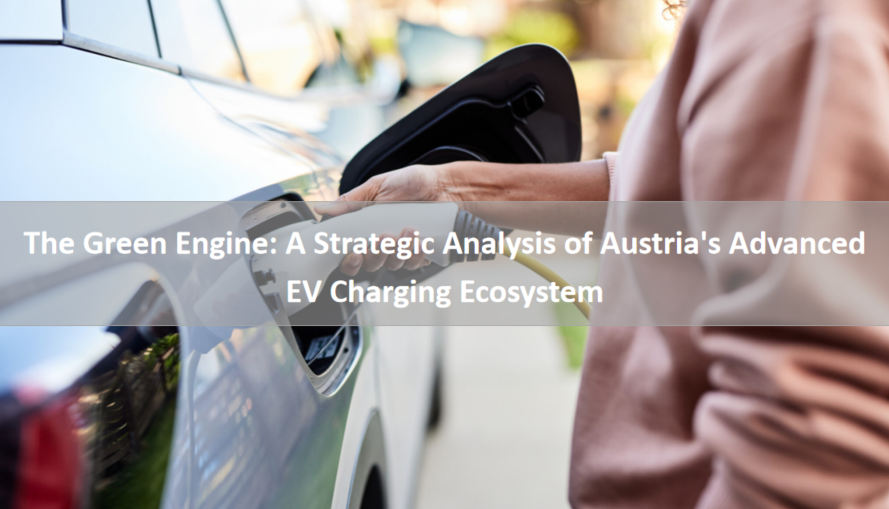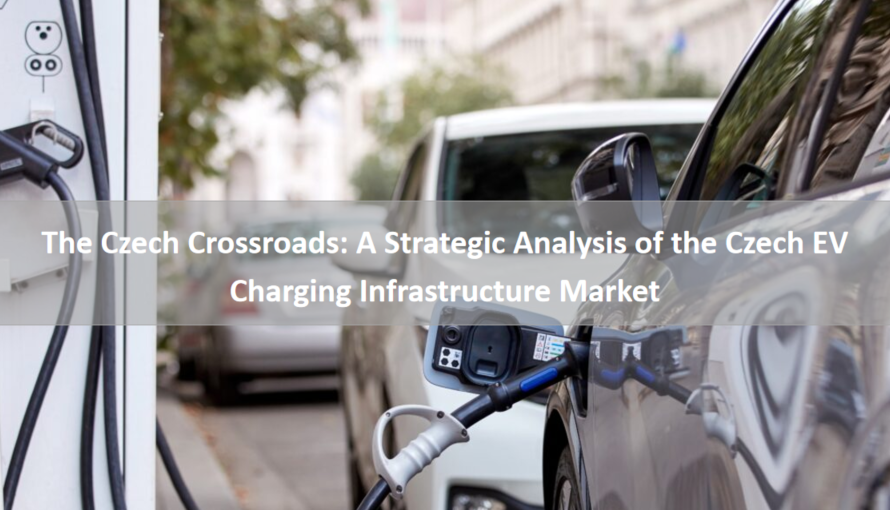
Executive Summary
Italy’s electric vehicle (EV) charging infrastructure is undergoing a rapid transformation, underpinned by strong policy incentives, robust EU support, and increasing consumer adoption. However, systemic challenges such as uneven geographic deployment, permitting bottlenecks, and grid constraints remain significant hurdles. This report examines the national policy framework, market dynamics, development status, and strategic opportunities and challenges of EV charging infrastructure in Italy. Our analysis shows that while Italy is lagging behind leading EU countries in terms of charger density, a convergence is underway—driven by targeted investments, private-public partnerships, and evolving consumer demand patterns.
Italy’s EV charging strategy is heavily influenced by EU-wide mandates. The European Green Deal and the Fit for 55 package mandate a 55% reduction in greenhouse gas emissions by 2030 compared to 1990 levels. The Alternative Fuels Infrastructure Regulation (AFIR) requires EU member states, including Italy, to ensure that charging stations are available every 60 km along the Trans-European Transport Network (TEN-T) by 2025.
Italy’s Piano Nazionale di Ripresa e Resilienza (PNRR) allocates over €740 million to EV infrastructure development. It includes targets to install 21,000 public charging points by 2026, particularly in urban centers, logistics hubs, and along highways.
Through the Ecobonus scheme, Italy offers up to €8,000 in incentives for electric vehicle purchases, and up to €1,500 for charging station installations by private users. Regions such as Lombardy and Emilia-Romagna provide additional subsidies for business and residential installations.
The Italian government has recently issued decrees to streamline permitting processes and reduce bureaucratic barriers for installing chargers. A “one-stop-shop” model for authorizations is being trialed in several municipalities to accelerate deployment.
As of 2025, Italy has over 230,000 electric vehicles on the road, representing about 1.5% of the total vehicle fleet, with BEVs (Battery Electric Vehicles) accounting for ~60% of that figure. Annual BEV sales reached 85,000 units in 2023, marking a 20% year-on-year growth.
• 2030 forecast: Italy is projected to have 6 million EVs on the road, implying a 26x growth from current levels.
• Charger demand ratio: Based on EU benchmarks, Italy will require at least 120,000 public charging points by 2030 to maintain a vehicle-to-charger ratio below 50:1.
As of early 2025:
• Italy has ~50,000 public charging points, according to Motus-E and the Italian Ministry of Infrastructure.
• Fast chargers (DC >50kW) account for only 8% of total installations, lagging behind countries like Germany (20%) and the Netherlands (15%).
• Private investments are accelerating: Enel X Way, Be Charge (Plenitude), and Free To X are collectively planning over 25,000 new chargers by 2027.
• Urban focus: 55% of chargers are concentrated in northern urban regions such as Milan, Bologna, and Turin.
• Highway coverage: Still fragmented—only 35% of highways have fast chargers at intervals of less than 60 km.
• Utilization rates: Currently at 15-20% on average, with peak-hour congestion in metropolitan zones.
• Enel X Way: Italy’s largest EV charging operator, managing over 20,000 public chargers, including AC and DC fast chargers.
• Be Charge (Plenitude/ENI): Focused on urban fast charging, targeting 15,000 public chargers by 2027.
• Free To X (Autostrade per l’Italia): Specialized in highway installations, with fast and ultra-fast stations at 50+ rest areas.
• IONITY & Tesla Superchargers: Operate limited but expanding networks primarily for long-distance travel.
• Load balancing and smart charging: Widely adopted by major CPOs for demand-side efficiency.
• OCPP interoperability: Ensures compatibility across networks, with Italy moving toward OCPP 2.0.1.
• Energy integration: Early pilots of Vehicle-to-Grid (V2G), particularly by Enel X and Nissan, are showing promising results.
• Renewable energy coupling: Over 30% of public chargers now integrate PV-sourced electricity via power purchase agreements (PPAs).
• North-South divide: 70% of public charging stations are located in the north; southern regions like Calabria, Sicily, and Basilicata remain underserved.
• Municipal autonomy: Municipalities play a central role in site approval, resulting in heterogeneous implementation timelines.
There is growing momentum behind PPPs to overcome funding and deployment barriers. Notable examples include:
• The Enel X – Municipality of Rome agreed to deploy 2,000 chargers.
• PNRR-backed co-investment schemes that lower CAPEX burden for private operators by 30–50%.
EV charging is becoming central to smart city plans. Integration with parking, ride-sharing, and renewable microgrids enhances infrastructure ROI.
With over 50 million international tourists annually, Italy can benefit significantly from strategically placed chargers at hotels, heritage sites, and transport nodes.
Italy’s push for smart grids, supported by Terna (national grid operator), offers synergies with V2G technologies and energy storage integration.
Despite national directives, local governments often impose divergent permitting requirements. Approval delays can stretch from 6 to 18 months.
Many rural and southern areas suffer from outdated grid infrastructure, limiting the deployment of fast chargers.
Cost of fast charging infrastructure installation remains high (approx. €40,000–€100,000 per site) due to grid connections, civil works, and hardware costs.
• Fragmented apps and payment platforms: Users face difficulties navigating different CPO systems.
• Availability and uptime issues: Charger reliability (~90%) trails behind northern European benchmarks (>95%).
Italy’s EV charging infrastructure is at a pivotal inflection point. While it currently lags in density and fast charging coverage, ongoing policy support, EU alignment, and private investment will drive significant acceleration in the coming years. To succeed, stakeholders must:
• Standardize and streamline permitting at the local level.
• Prioritize equitable geographic expansion, especially in the south.
• Accelerate fast charging deployments on highways and logistics hubs.
• Invest in digital and grid integration technologies, such as smart charging and V2G.
If executed effectively, Italy can transition from a fragmented landscape to a coherent, scalable, and sustainable EV charging network—setting a benchmark for Southern Europe.
Read more:







